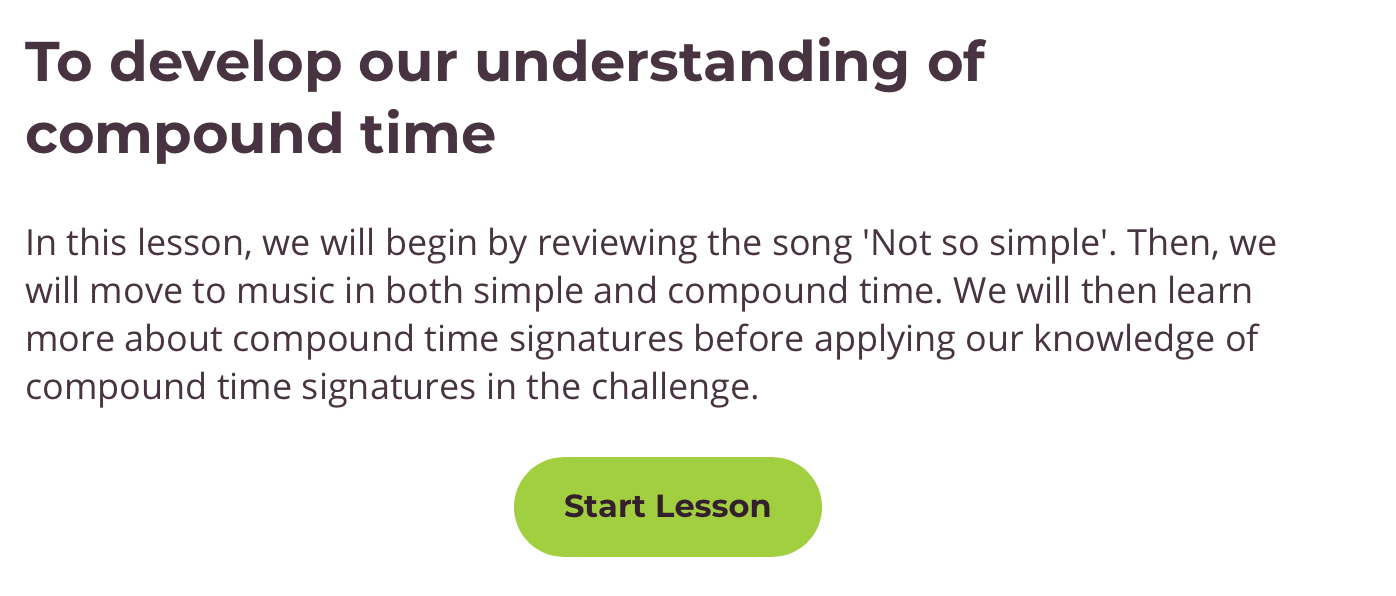I hope you are enjoying learning at home!
Today, we are delving deeper into our musical topic all about compound time.
For the lesson you will need
- your body - there are some complicated moves, be prepared!
- a pen or pencil
- some paper
- the worksheet
In our lesson today, we are going to:
- review the song 'Not so simple'
- move to music in both simple and compound time
- learn more about compound time signatures
- apply our knowledge of compound time signatures in the challenge.
A Reminder - Simple and Compound Time
What is the difference between these two musical metres?
Compound Time - musical metre in which each beat can be split into three equal units
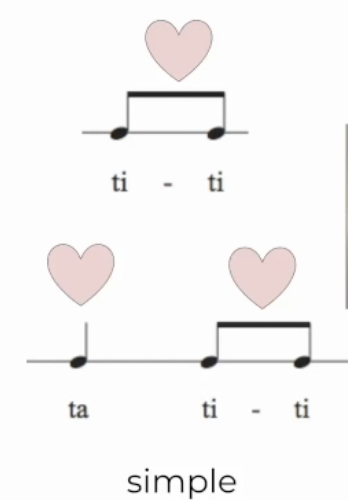
Common counting patterns would be:
-
one, two, three, four
-
one and two and, one and two and
In compound time, each of the beats can be broken down into three:
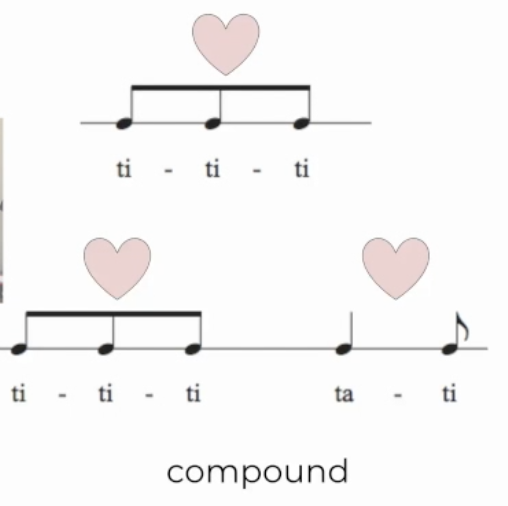
-
one and a, two and a
-
one two three, two two three, one two three, two two three
Can you switch between these patterns and rhythms in the same piece of music?
Comparing 2/4 time (simple time) and 6/8 time (compound time)
-
Both 2/4 and 6/8 have two main beats in the bar.
-
What does 6/8 have to do with two beats in a bar?
-
In 6/8 time
- there are still two main beats in a bar - count 'ONE and a TWO and a'
- and there are six 'little beats' (quavers) - count one, two, three, four, five, six - which is why it is know as 6/8
-
In 6/8 time
-
When counting the beat
- in 2/4 time, the beats can be split in half
- in 6/8 time, they can be broken down into three units
Compound Time Signatures - some examples
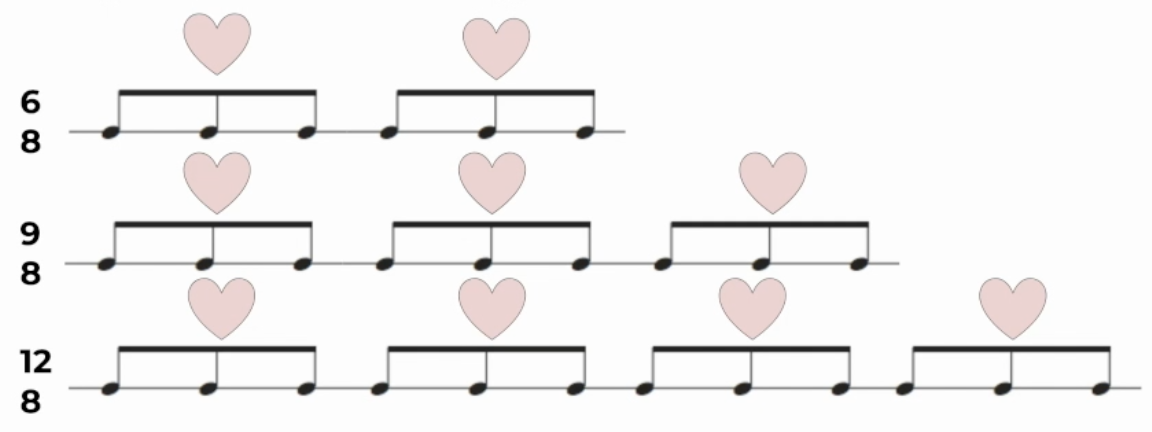
Task
As we sing the song 'Sorida', can you try to follow the notation and counting below?
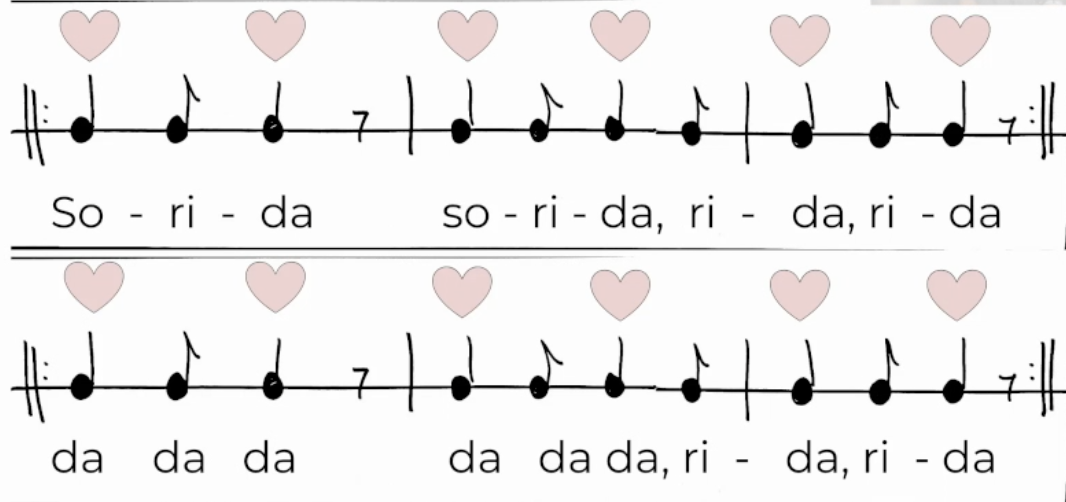
NOTE
- The double lines and two dots at the beginning and end of each line are called 'repeat signs'
-
The repeat signs mean 'repeat the music between the pairs of signs that are facing each other'
- so we sing each line twice.
- This song is in 6/8
There is a two page worksheet to complete during and at the end of the lesson - click here on the
boxes below to see the sheets. You might want to print them out (or write out the questions) before
you start so that you can answer the questions as you go:
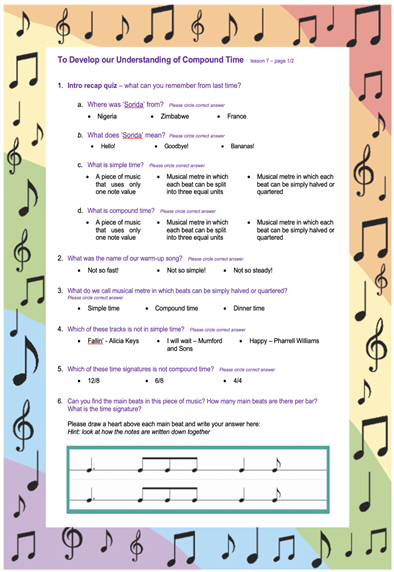 |
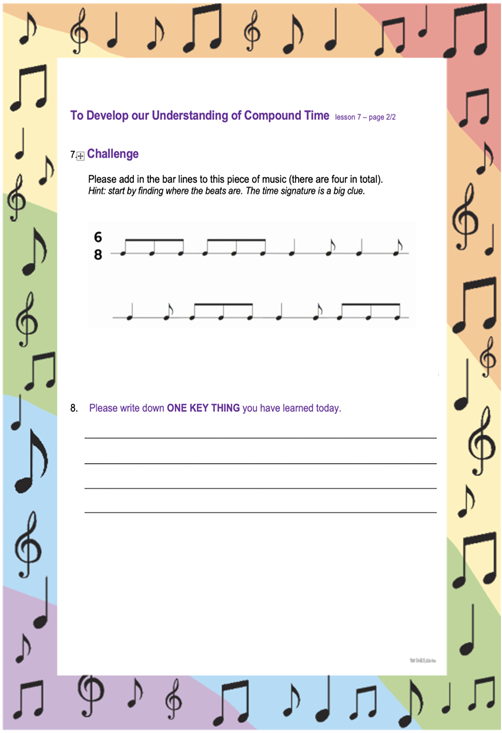 |
The Lesson Video
You are now ready to meet Miss Miner for the main part of our lesson.
We will be looking at:
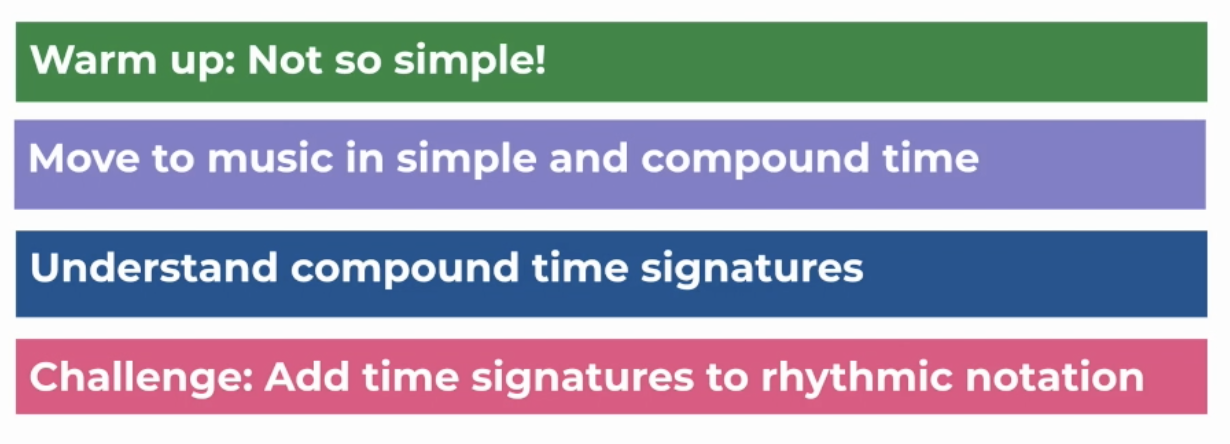
At the beginning of the lesson, there is a quiz - good luck!
Before you start the lesson, please read through the instructions on this page.
Please use this page as your reference document.
That was a lot to learn! Can you teach a member of your household the difference
between simple and compound time? You could use the music and movement skills
you have learned in this lesson to help you.
That is the end of our lesson where we have learned more about compound time.
I hope you enjoyed it!
Please let me know if you have any questions, compound time can be quite complicated
to understand.
Once you have watched the video and taken part in all of the activities, please
make sure that you complete the two page worksheet.
Please send your completed work to your class teacher for me in the usual way -
a photo or a scanned copy will be fine. Thank you.
I am looking forward to reading your answers.
See you next time!
Mrs Sumner
Thank you to the wonderful people at the Oak National Academy for sharing this lesson with us
Autumn Term 2025
Fun, Inspiring (and often quite loud!) Music Lessons for Home School Hubs and Primary Schools
Specialising in:
- Primary Music Curriculum provision
- Whole Class Instrumental teaching
- Includes free use of instruments!
07941 282311
In association with
Little Strummers
"I found it very interesting and I thought that children learned about rhythm, by using body percussion without even realising that they were in a lesson, because it was so much fun for them!"
"I would highly recommend it!"
"I thought the song was lovely - there was a nice mix of playing the bowls, clapping, singing and actions. The whole idea of kitchen percussion is a brilliant one for lockdown but good in usual times too."
"The level of what you did/taught was perfect for their age and similar to things they do at school."
"The children all thoroughly enjoyed the session and were engaged throughout. They enjoyed having the opportunity to hold their own ukulele and learn to play along to some simple songs."
"The session was delivered brilliantly and the different stages were broken down into small sections to allow all children to participate."

